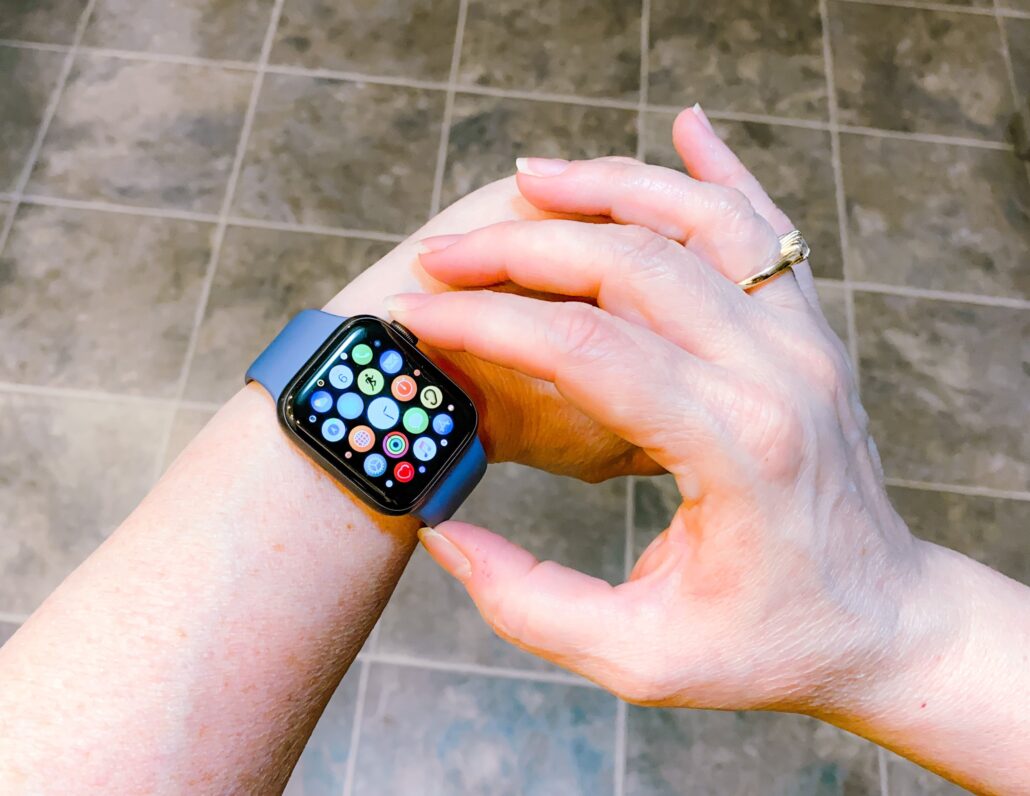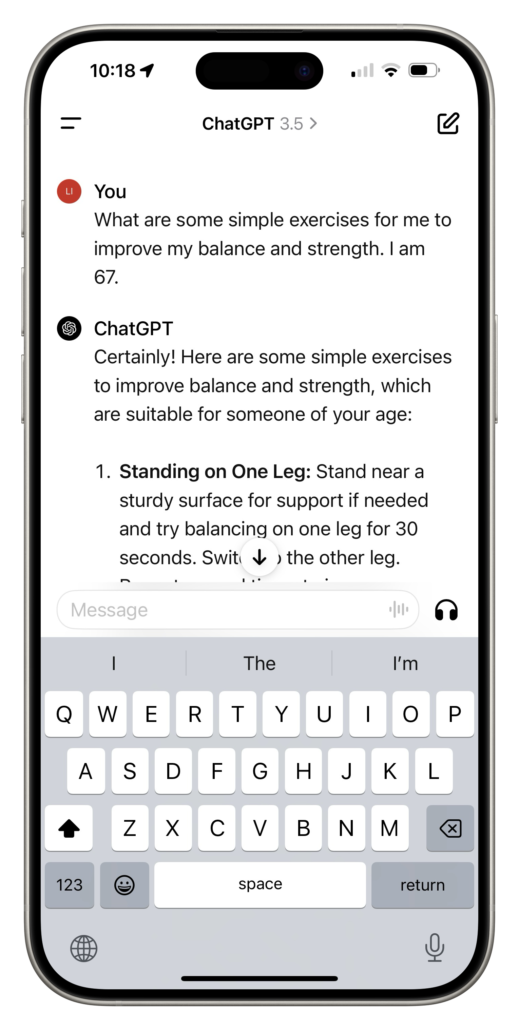Guest Article by Linda Fawcus of Gluu Society
This article appears in the Spring 2024 issue of PostScript Magazine
The dominance of Artificial Intelligence (AI) in the headlines might give the impression that its development has been sudden. But as Steve Jobs said, “Every overnight success you’ve ever heard about took a long time.” In the case of AI, that “long time” has been 60 years in the making. You’ve likely been using AI since the 2010s, if you’ve ever taken a photo with your mobile device, had Google Maps help you with directions, or relied on autocorrect to fix a typo.
Fire allowed our ancestors to thrive, electricity birthed the Industrial Revolution, and microchips started the digital era. AI dawns the era of unprecedented human capability and knowledge. Anything we can do with our human intelligence, we can do better with AI. It gives us a realistic shot at solving impossible challenges, from climate change to eradicating disease. I’m better at math with a calculator; times that by a trillion trillion and you might be scratching the surface of what humans can do alongside AI.
AI Gets Chatty
Three words make the AI we’re talking about today different than the AI of the 2010s (and they’re a mouthful)—Generative Pre-trained Transformer (GPT). Using a GPT chatbot feels like you’re talking to a human. OpenAI’s 2020 launch of ChatGPT-3 was a significant leap forward, and GPTs have been being integrated into everyday products and services ever since. This widespread integration of ChatGPT makes it a topic of dog walks and dinner parties.
A Robot Uprising?
Fear-inducing headlines attract more eyeballs, and that means more ad revenue. Stories about the coming AI robot uprising can be a pretty compelling read, as long as you realize they are fiction. These headlines are mixing the narrow AI we have today with Artificial General Intelligence (AGI), which does not exist yet.
But the concept of AGI does keep a lot of people up at night. The goal of AGI is to be more intelligent than humans. Some worry that if not controlled, it may eventually part ways with us by destroying the human race. Circle the AGI Launch Date for some time between 2040 and never-will-happen; back in the 60s, they thought it would take 20 years.
State of AGI Development
Every major tech company around the world and companies you’ve never heard of are working to achieve AGI. If they get there, the world will be very, very different. It will challenge our understanding of what makes humans unique, our role in work, and how the wealth generated by AGI will be distributed. These are once-in-a-species questions, and I can see us getting help from AI to navigate them.
But AGI is not something that will pop out of a garage like the personal computer did. Microsoft needed $13 billion to partner with OpenAI, and IBM has burned through $200 billion. You need bottomless pockets to play this game.
Big money means AGI will undoubtedly be controlled by a select few, which threatens greater inequality. What countries and what people control AGI is a conversation the global community needs to have. We must be vigilant and proactive in ensuring that AGI is developed and used responsibly and for the benefit of all. For now, AGI is a goal, not a reality.
AI in 2024
Today’s AI is math and code trained on our past behaviours scraped from the entirety of the Internet. It doesn’t think like humans. It’s not sentient. It has no feelings. And it cannot go beyond the bounds of the math and code that humans have created to control it. If you want to put your fears of human extinction in the proper bucket, I would drop it in the one labelled Climate Change.
AI will make it easier to do everything—the good and the bad. I like the analogy to fire and rocks—these are tools we used to feed ourselves and build our homes. They were also used to burn us and kill people. Such is human nature, but we can’t un-ring the AI bell. AI is not a physical thing to be locked away. Anyone can learn how to build an AI using free online courses and YouTube videos. Instead, we can use AI to help prevent AI-assisted crimes before they happen. The best defence is a good offence, after all. We have time to take proactive, assertive action. The good news is that we already have laws to deal with the AI-assisted bad guys.
The bad news is that deepfake videos, photos, and audio are here. No, that wasn’t the Ukrainian president Volodymyr Zelenskiy telling his soldiers to lay down their weapons or explicit pictures of Taylor Swift on X/Twitter, or Taylor Swift (again) giving away Le Creuset cookware. Today, we can’t trust anything we see or hear online unless verified.
Cryptographic signatures will help verify digital content, but that technology is not yet ready for widespread use. For now, we must protect ourselves from deepfakes by verifying digital content and not participating in spreading misinformation. It’s like gossip on steroids or worse. The concerns that AI will create a surge of deepfakes and other forms of misinformation in the upcoming US and Canadian elections are real. Some experts are optimistic that AI-related threats won’t materialize this election cycle. The optimists among us believe it’s possible that AI could benefit democracy by helping engage more voters. Fingers crossed.
Aging Alongside AI
We are the first generation who will age supported by AI. How much of it you use will depend on your mindset. Getting old takes bravery. Now is the time to lean into that. If you want to stay living in the home you love, find ways to weave AI into your everyday routines. A smart speaker or the digital assistant on your mobile device are good places to start.
 Then, do what you can to move beyond the handful of apps you’ve used for years and embrace new AI-based technology. Ask yourself if you’re ready for:
Then, do what you can to move beyond the handful of apps you’ve used for years and embrace new AI-based technology. Ask yourself if you’re ready for:
- Health Monitoring Devices
- Watches with Fall Detection and Emergency Assistance
- Medication Management and Reminders
- In-home Automation for Convenience and Safety
If not, why not? Some of this is available today, and by 2030, the average smart home is expected to have 20 devices connected to the Internet, many relying on AI.
People tell me they won’t wear an Apple Watch or similar tracker because of the perceived invasion of privacy (yet these people are on Facebook). OK, but today, that watch can call Emergency Services if you fall. And it will eventually alert you long before you fall by detecting subtle changes in your stride or other factors. It might then remind you that a change in your exercise routine is needed if you want to stay fit enough to live independently. Tap Yes! and a personalized workout plan and new playlist will land on your smartphone. You can even tell your AI to offer nudges to keep you going.
This may all feel intrusive. But having AI help you take a proactive approach to your health and fitness could save you from moving into a care home before your time—and that’s a place where your privacy looks a whole lot different.
AI technologies can significantly contribute to the safety, health, and overall quality of life for us older adults. It will become a lifeline as our world shrinks, as it sadly does as we age. Bring on the AI-driven cars to chauffeur us to fitness classes, stores, and gatherings.
 It’s All About the Prompt
It’s All About the Prompt
2024 is the year AI goes mainstream. The best use of your time today is to get comfortable with ChatGPT. It’s the most popular and advanced (for now), but Google’s Bard is catching up and coming to Canada soon. You can ask it anything.
When you talk to ChatGPT, it’s called a conversation. Start with a question called a prompt. Make your prompts clear and specific about what you want to achieve. A great starter prompt is “I’m new to using ChatGPT. Explain what a prompt is and give me tips on using this tool effectively.”
Here’s a more detailed prompt that nicely highlights the difference between ChatGPT and a Google search.
- Provide recommendations for the best canal barge cruise routes in Europe in October. I am looking for options that ideally meet the following criteria:
- Routes with good weather in October.
- Routes with optimal water levels for safe and smooth cruising.
- Less crowded areas to avoid tourist congestion.
- Routes that are highly scenic and have opportunities to experience local culture. Add information about picturesque areas or routes that pass through regions rich in cultural heritage.
Keep your conversations focused. Avoid combining questions about what book to read with requests for exercise ideas to help you win at pickleball in a single conversation.
Remember ChatGPT makes mistakes, so double check the answers you receive. Common sense and online research will help you land on answers you can trust. But each mistake makes me smile, knowing we’re smarter than AI (for now).
ChatGPT Privacy and Data Security
ChatGPT cannot act on or share the information you add to a conversation. OpenAI promises ChatGPT is designed to prioritize your privacy and data security. Basically, it’s the opposite of Facebook.
Using a Search Engine with ChatGPT
Using ChatGPT with any search engine is a powerful combo.
1. Start by asking ChatGPT for in-depth explanations and information on your topic. It’s great for breaking down complex subjects. Ask it to brainstorm with you to spark new ideas.
2. Search online to cross-check facts and find other perspectives. If something of interest pops up, copy it into your ChatGPT conversation.
3. Ask ChatGPT to summarize everything to give you a solid grasp of your subject.
Where to Find ChatGPT
There are two models of ChatGPT available at the time of this writing. ChatGPT-3.5 and ChatGPT-4. You can access them in a few ways:
Through Microsoft:
Get ChatGPT-4 for free through the Bing browser. Go to bing.com. This works for Mac and PC devices.
Through OpenAI:
Go to chat.openai.com to sign up. Or get the ChatGPT app from your App Store. ChatGPT-3.5 is free. ChatGPT-4 will set you back US$20 per month.
If It Walks Like a Duck
It’s tempting to treat conversational AI like people. But when we form emotional attachments to AI, we shift into dangerous territory (although I do love my smartphone). Because we’re talking about using social robots to care for and be companions to the elderly, these are important ethical and philosophical conversations to have now.
Keeping the line between humans and AI defined is critical. Saying “Please” and telling the AI it’s “doing a great job!” blurs that line. Consider saving the Rules of Etiquette for your humans. After all, you probably don’t say “Thank You” to the Weather app.
Ready to Learn More?
We’ve created the Gluu Guide to AI to get you started with AI and ChatGPT in your everyday life.
It’s available for free at Gluu Society:
gluusociety.org/ai-guide
About the Author
Leveraging her 28 years of expertise as a tech entrepreneur, LINDA FAWCUS founded Gluu Society, a nonprofit organization in Canada to help older adults use technology to stay happy, healthy and connected. Check out her TedTalk “The Surprising Ways Technology Is Transforming How We Age” which is available on YouTube.
Linda also recently was interviewed on the topic of AI by David Denyer, BCRTA Director and Communications Committee Chair. That interview is available on our website at bcrta.ca.


